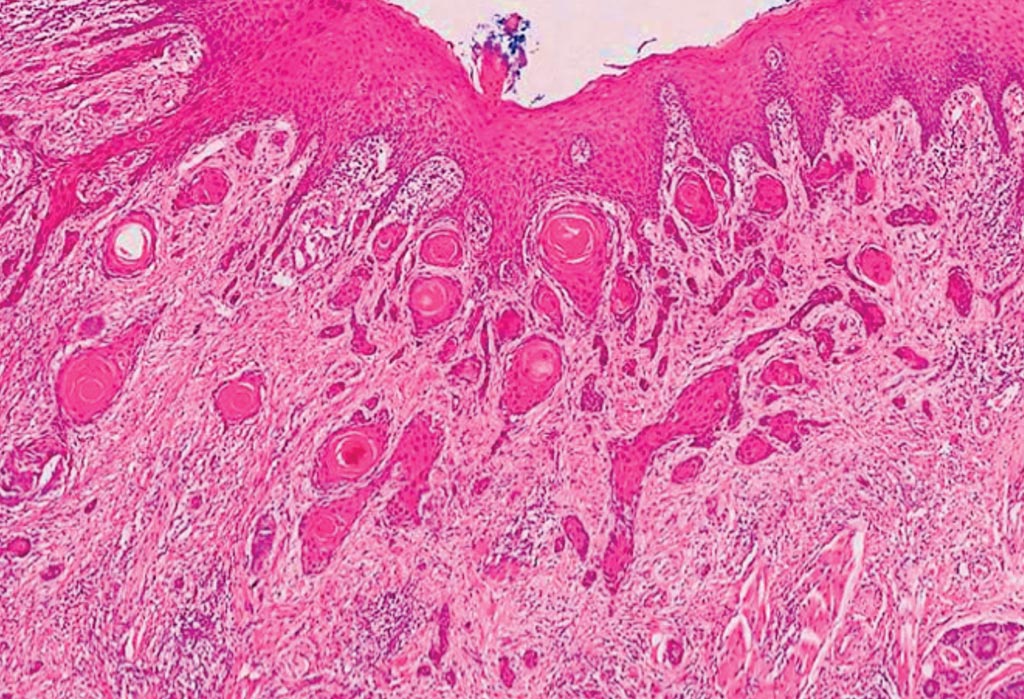Biomarkers of Oral Cancer Discovered
By LabMedica International staff writers
Posted on 30 Apr 2019
Epigenetics, the non-genetic influences on gene expression, is a powerful mechanism capable of altering gene expression in cancer cells without changes to the DNA sequence, and can cause tumor progression.Posted on 30 Apr 2019
Oral cancer is known for its high mortality rate in developing countries, but an international team of scientists hope its latest discovery will change that. The team has discovered epigenetic markers that are distinctly different in oral cancer tissues compared to the adjacent healthy tissues in patients.

Image: A histopathology of oral cancer: tumor islands can be seen infiltrating the connective tissues deep to the overlying oral epithelium. This carcinoma is moderately differentiated with a non-cohesive invasive pattern (Photo courtesy of University of Sheffield).
Collaborating scientists from the University of Otago (Otago, New Zealand) and the Indian Statistical Institute (ISI, Kolkata, India) recruited 16 oral cancer patients in India, who were either tobacco smokers or chewers or of mixed habits, and took samples of both tumor and normal, adjacent tissue from them.
The team isolating the DNA in the samples, and discovered regions with altered epigenetic profiles in tumors cells compared to normal cells. They looked at one epigenetic mechanism, DNA methylation, which refers to the addition of methyl groups to DNA, like bookmarks. A total of 4,310 unique differentially methylated regions, mapping to 144 miRNA loci, were identified. Three distinct groups of miRNAs were differentially methylated in cancer tissues from smokers, chewers and mixed habitués. Hypermethylation of miR-503, miR-200a/b, miR-320b and miR-489 was associated with worse 5-year survival.
How these bookmarks are arranged could dictate the expression of genes and the spread of abnormal cells. Late diagnosis and poor prognosis are key problems associated with the high mortality rate of this cancer in developing countries. Of the 300,000 cases of tobacco associated oral cancer detected globally, 86% are from India. Aniruddha Chatterjee, PhD, a senior research fellow and co-author of the study, said, “This phenomenon is relatively new and under studied, particularly in oral cancer. This study is one of the first to identify epigenetic markers in oral cancer, using cutting-edge approaches.”
Roshni Roy, PhD, the lead author of the study, added, “We were also surprised to see that small molecules, called microRNA, were methylated or demethylated in the tumors from smokers or chewers or mixed habitués, suggesting that therapeutic intervention might be different in patients depending on the way the tobacco was abused.” The study was published on March 15, 2019, in the journal Epigenomics.
Related Links:
University of Otago
Indian Statistical Institute














